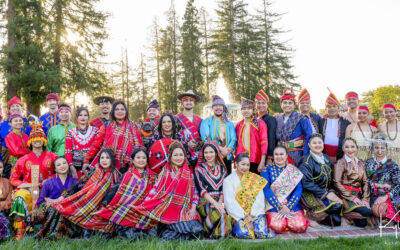Japanese court music
The Selma Arts Foundation aims to enrich the lives of all people in the southern part of Fresno County by promoting and celebrating the arts in all forms. In 2015, a grant from ACTA’s Living Cultures Grants Program will support the Selma Arts Foundation’s Bhangra…
Bharatanatyam is a classical Indian dance form originating in the South Indian temple dance tradition, which combines the arts of the stage, music, poetry, costuming, and rhythm. Bharatanatyam is characterized by graceful movements, intricate footwork, sculpturesque poses, and deep dramatic elements which require years of rigorous training to perfect. An…
The mrudangam is a double-headed drum. It is said to be the “king of percussion” and dates back to 4 or 5 century BCE, with references found in the great Indian epics Ramayana, Mahabharata, and Srimad Bhagavatham. Today it is featured in all South Indian classical music (Carnatic) concerts as…
The qeej (a multiple pipe bamboo mouth organ, pronounced kheng) is the quintessential Hmong instrument. Used in ritual practices, the qeej replicates the tones and vowel sounds of the Hmong language and the qeej player uses his instrument to communicate with the spirit world. Ritual movements accompany the music; your…
Hayashi is a traditional Japanese percussion ensemble. Originating in Noh theater in the 14th century, hayashi also plays an important part in Kabuki theater. The core hayashi instruments are the kotsuzumi (a shoulder drum that produces low sounds), the okawa (a hand drum that makes very high sounds), and the…
The Central Coast Japanese American Legacy Organization’s ambition is to preserve, document, and contribute to the living history of the Central Coast’s Japanese American community, now five generations strong. A grant from ACTA’s Living Cultures Grants Program in 2015 will support the development of a community…
Chamorro Hands in Education Links Unity (CHE’LU) is dedicated to San Diego’s Chamorro community by strengthening their native language, culture, and health through education and cultural arts programs. The Chamorro people are the indigenous peoples of the Mariana Islands, including Guam. Today, Chamorros are the most…
Pangalay dancer and culture bearer
Nastaliq is the most popular calligraphy style in the Persian-speaking world. Nastaliq is mainly used to write Persian poetry, which alongside calligraphy occupies a significant place in the everyday life of Iranians. Since the ancient foundation of Islam, calligraphy has been the dominant and emblematic feature of Islamic art. The…



